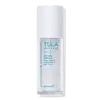What's inside
What's inside
 Key Ingredients
Key Ingredients

No key ingredients
 Benefits
Benefits

 Concerns
Concerns

No concerns
 Ingredients Side-by-side
Ingredients Side-by-side

Water
Skin ConditioningDipentaerythrityl Hexacaprylate/Hexacaprate
EmulsifyingPentaerythrityl Tetraisostearate
EmollientIsononyl Isononanoate
EmollientPropanediol
SolventGlycerin
HumectantCaprylic/Capric Triglyceride
MaskingSodium Hyaluronate
HumectantHydrolyzed Hyaluronic Acid
HumectantSodium Hyaluronate Crosspolymer
HumectantHydrolyzed Sodium Hyaluronate
Skin ConditioningSodium Acetylated Hyaluronate
HumectantSodium Polyglutamate
HumectantSqualane
EmollientCollagen
MoisturisingLactococcus Ferment Lysate
Skin ConditioningLactobacillus Ferment
Skin ConditioningLactobacillus
Skin ConditioningBeta Vulgaris Root Extract
Skin ConditioningCurcuma Longa Root Extract
MaskingPyrus Malus Fruit Extract
Skin ConditioningCitrullus Lanatus Fruit Extract
Skin ConditioningVaccinium Angustifolium Fruit Extract
Skin ProtectingLens Esculenta Fruit Extract
Skin ConditioningHydrolyzed Rice Protein
Skin ConditioningInulin
Skin ConditioningAlpha-Glucan Oligosaccharide
CleansingLactic Acid
BufferingSodium PCA
HumectantHydrogenated Poly(C6-20 Olefin)
AbrasiveHydroxyacetophenone
AntioxidantLeuconostoc/Radish Root Ferment Filtrate
AntimicrobialPolymnia Sonchifolia Root Juice
Skin ConditioningRhus Verniciflua Peel Wax
Caprylyl Glycol
EmollientSodium Lactate
BufferingCarrageenan
Pentylene Glycol
Skin ConditioningMaltodextrin
AbsorbentButylene Glycol
HumectantSodium Chloride
MaskingEthylhexylglycerin
Skin Conditioning1,2-Hexanediol
Skin ConditioningAcrylates/C10-30 Alkyl Acrylate Crosspolymer
Emulsion StabilisingTromethamine
BufferingHdi/Trimethylol Hexyllactone Crosspolymer
Sodium Benzoate
MaskingPotassium Sorbate
PreservativeWater, Dipentaerythrityl Hexacaprylate/Hexacaprate, Pentaerythrityl Tetraisostearate, Isononyl Isononanoate, Propanediol, Glycerin, Caprylic/Capric Triglyceride, Sodium Hyaluronate, Hydrolyzed Hyaluronic Acid, Sodium Hyaluronate Crosspolymer, Hydrolyzed Sodium Hyaluronate, Sodium Acetylated Hyaluronate, Sodium Polyglutamate, Squalane, Collagen, Lactococcus Ferment Lysate, Lactobacillus Ferment, Lactobacillus, Beta Vulgaris Root Extract, Curcuma Longa Root Extract, Pyrus Malus Fruit Extract, Citrullus Lanatus Fruit Extract, Vaccinium Angustifolium Fruit Extract, Lens Esculenta Fruit Extract, Hydrolyzed Rice Protein, Inulin, Alpha-Glucan Oligosaccharide, Lactic Acid, Sodium PCA, Hydrogenated Poly(C6-20 Olefin), Hydroxyacetophenone, Leuconostoc/Radish Root Ferment Filtrate, Polymnia Sonchifolia Root Juice, Rhus Verniciflua Peel Wax, Caprylyl Glycol, Sodium Lactate, Carrageenan, Pentylene Glycol, Maltodextrin, Butylene Glycol, Sodium Chloride, Ethylhexylglycerin, 1,2-Hexanediol, Acrylates/C10-30 Alkyl Acrylate Crosspolymer, Tromethamine, Hdi/Trimethylol Hexyllactone Crosspolymer, Sodium Benzoate, Potassium Sorbate
 Reviews
Reviews

Ingredients Explained
These ingredients are found in both products.
Ingredients higher up in an ingredient list are typically present in a larger amount.
Squalane is an emollient that helps the skin hold onto moisture. It's an oily liquid that occurs naturally in certain types of fish and plant oils.
Because squalane boosts hydration in the skin, it also comes with plenty of benefits: it is an antioxidant and can help fight free radicals and skin damage. Squalane is also found to have a detoxifying effect when applied.
Squalane comes from squalene, which occurs naturally within the sebum of our skin. It is one of the oils our skin produces to keep itself hydrated. Squalane is the hydrogenated version of squalene and has a longer shelf life.
Research shows that squalane is non-irritating (even at 100% concentration).
In general, it's a fantastic ingredient. It does a great job at hydrating the skin, and it's suitable for those with sensitive skin.
The source of squalane may impact malassezia / fungal acne. This is because olive oil derived squalane can contain impurities such as fatty acids and plant waxes. Sugarcane derived squalane is recommended for anyone with malassezia concerns.
Is squalane vegan?
This depends on the source. Squalane can be derived from both plants and animals. Most squalane used in skincare comes from plants.
Please note: the source of squalane is only known if disclosed by the brand. We recommend reaching out to the brand if you have any questions about their squalane.
Read more about squalene with an "e".
Is squalane an oil?
Squalane is often called an oil, but it’s technically not; it’s a hydrocarbon, meaning it’s only made of carbon and hydrogen, unlike true oils which are triglycerides made of fatty acids and glycerol.
The term “oil-free” isn’t regulated, so companies can define it however they want. Some exclude all oils, while others just avoid mineral oil or comedogenic oils.
While some people avoid oils thinking they cause breakouts, the right kind of oil (or oil-like ingredient like squalane) can actually help balance and hydrate your skin. It’s worth testing out simple oils or squalane to see what works best for your skin.
Learn more about Squalane